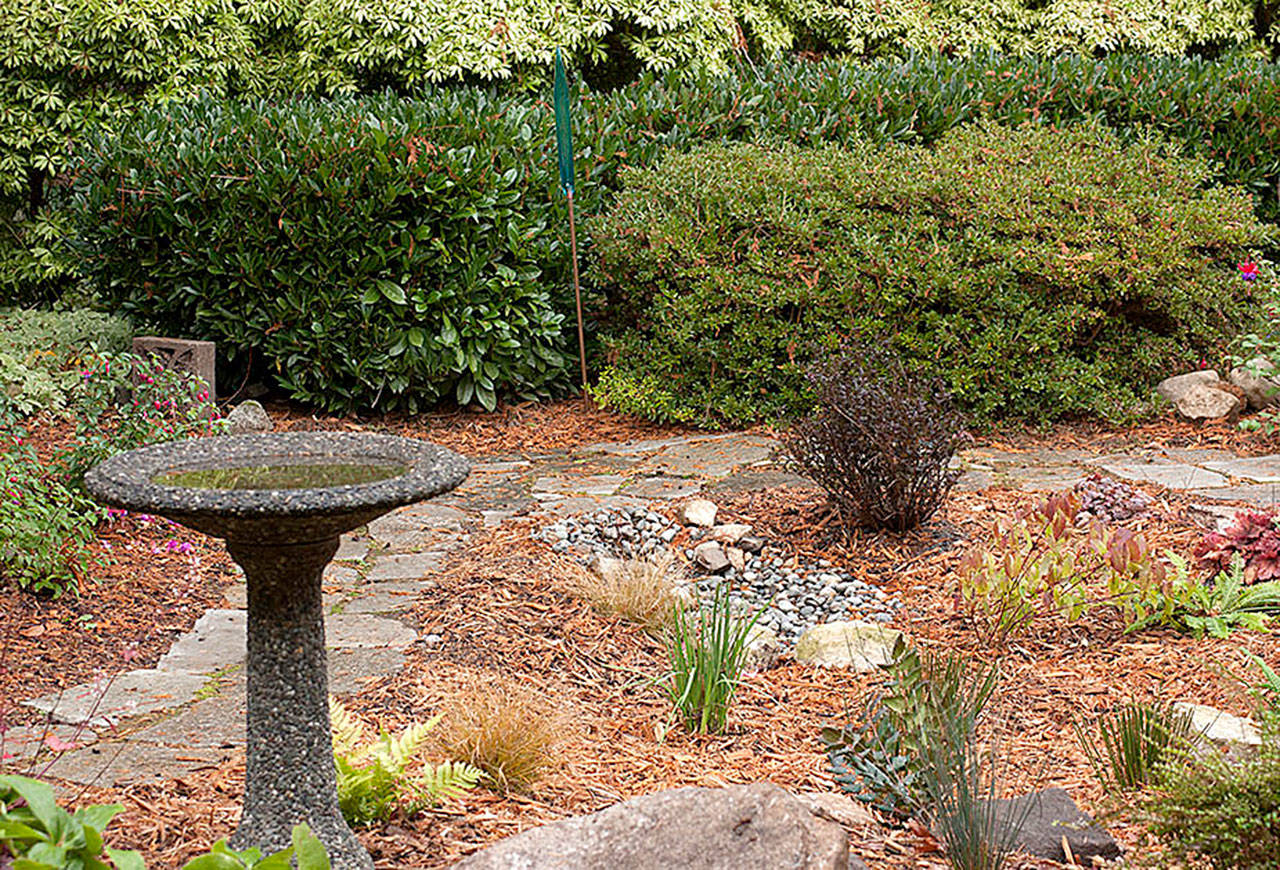It’s that time of year again to think about the upcoming rainy season. Whether you live in a rural area or in the city, you probably have “runoff water” from impervious surfaces.
A practical and attractive way to manage this runoff water is with a rain garden!
A rain garden is a planted depression into which water from roofs, driveways, lawns and other surfaces is directed. The soil and plants in the rain garden, filter contaminants from the runoff water and allow it to soak into the soil rather than flow into a storm drain or waterway.
A rain garden should be about 30 percent of the size of the area being drained. Choose a spot where water can be easily directed into the rain garden through a drainpipe or bioswale (a rock or plant-lined linear depression that directs the flow of runoff while allowing it to be absorbed into the soil).
Work with the natural contours of your land in locating the rain garden. The garden should slope away from any buildings and should be at least 10 feet from building foundations. Do not locate a rain garden on a septic drain field, over shallow utilities, or on a grade of more than 15 percent.
To build your rain garden, remove the turf and dig a depression that is 18- to 30- inches deep. If you have clay soil, backfill the depression with a mix of 60 percent screened sand and 40 percent compost. If your excavated soil is not clay, mix 65 percent of the excavated soil with 35 percent composted material and backfill the depression. The top of the backfill should be 6 inches below the native surface, creating a pond.
The rain garden itself should have a level bottom and sloping sides. With the proper soil mixture, collected runoff water should drain from the rain garden within two days.
If the slope of the water delivery is more than 2 percent, build small rock dams to slow the water and protect against erosion. Create a 4-foot-long, rock-lined overflow area to handle excess water from heavy rainfalls. Establish a defined break between the edge of your rain garden and the surrounding area.
Consider the following planting zones when selecting plants for your rain garden:
• Zone 1, the innermost area, requires plants that can tolerate the wettest conditions
• Zone 2, the middle area, requires plants that can tolerate occasional standing water
• Zone 3, the outer edge, requires plants that prefer the driest drier conditions
In addition, consider whether your rain garden is in full sun, full shade, or some of each. Choose plants with their size, shape and cultural requirements in mind.
For best results, water plants in your rain garden regularly during the first two years until they are established. Place 3 inches of mulch throughout the garden will to help retain moisture during dry weather.
Remove weeds when they appear. Never use pesticides or fertilizers in your rain garden.
An excellent source of information on rain gardens can be found by visiting extension.wsu.edu/raingarden.
Judy English is a WSU-certified Clallam County Master Gardener.



